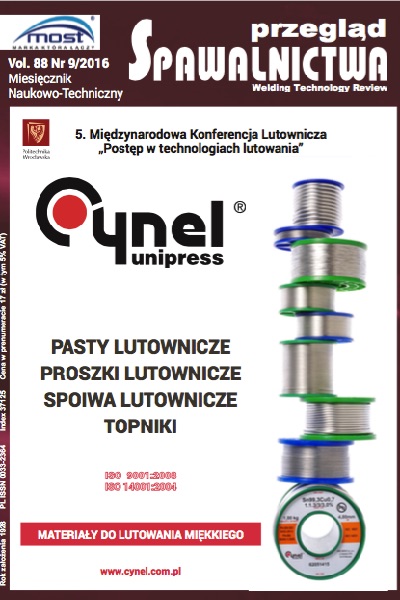Flüssigkeitsstrahllöten - ein Verfahren zur Herstellung von Verbindungen an extrem dünnen Bauteilen
Main Article Content
Abstract
Zusammenfassung
Das Automobil der Zukunft muss die wach-senden gesellschaftlichen Erwartungen im Hinblick auf Energieeffizienz, Kraftstoffver-brauch, Klimaschutz, Sicherheit, Komfort und Nachhaltigkeit erfüllen. Dem Leichtbau kommt dabei eine besondere Rolle zu. Neuere Entwicklungen gestatten es, dem Endan-wender der Mobilität produzierenden Industrie bereits mit vorgefertigten Leichtbau-verbund- werkstoffen, den Stahl-Kunststoff-Stahl-Verbundwerkstoffen, zu arbeiten. Diese neuen Stahl-Kunststoff-Stahl-Verbundwerkstoffe intelligent zu nutzen, erfordert geeignete Fügetechnologien. Das tragfähige Verbinden von Stahl- Kunststoff-Stahl-Verbundwerkstoffen unter Beibehaltung des Multimaterialkonzeptes wird zum zentralen Baustein der Realisierung von Leichtbau. Ziel des Beitrages ist es, eine neuartige, effiziente Fügetechnologie zur Herstellung von Karosseriekomponenten mit Stahl-Kunststoff-Stahl- Verbundwerkstoffen und konventionellen Stählen durch den Einsatz thermischer Energie in Form eines metallischen Flüssigkeitsstrahles vorzustellen.
Streszczenie
Motoryzacja przyszłości musi sprostać rosnącym społecznym oczekiwaniom związanym z efektywnym wykorzystaniem energii, zużyciem paliwa, ochroną środowiska, bezpieczeństwem, komfortem i trwałością. Lekkie konstrukcje pojazdów odgrywają przy tym szczególną rolę. Najnowsze rozwiązania technologiczne pozwalają użytkownikowi w tym wypadku branży motoryzacyjnej pracować z odpowiednio przygotowanymi lekkimi kompozytami na bazie stali i tworzywa sztucznego. Inteligentne zastosowanie tych kompozytów typu sandwich wymaga odpowiedniej technologii łączenia. Uzyskanie połączeń kompozytów, które spełniają warunki nośności, przy uwzględnieniu wielomateriałowej struktury pojazdu będzie głównym aspektem realizacji lekkich konstrukcji w motoryzacji. Celem artykułu jest przedstawienie nowej, efektywnej technologii wykonywania połączeń elementów karoserii z blach kompozytowych i konwencjonalnych z wykorzystaniem energii cieplnej strumienia ciekłego metalu i aktywacji laserowej.
Downloads
Article Details
Creative Commons CC BY 4.0 https://creativecommons.org/licenses/by/4.0/
Welding Technology Review (WTR) articles are published open access under a CC BY licence (Creative Commons Attribution 4.0 International licence). The CC BY licence is the most open licence available and considered the industry 'gold standard' for open access; it is also preferred by many funders. This licence allows readers to copy and redistribute the material in any medium or format, and to alter, transform, or build upon the material, including for commercial use, providing the original author is credited.
References
ThyssenKrupp (2013): LITECOR® Die neue Art, leicht zu bauen. ThyssenKrupp technikforum 1I2013. Online im Inter net: URL: http://www.thyssenkrupp.com/documents/Publikationen/Techforum/techforum_1_13_ de.pdf, Stand 15.10.2013, S. 48, bis 52.
at2steel (2013): Weltneuheit Leichtblech at2. Online im Internet: URL: http://www.at2steel.com/index.drs4?article_id=15&row=0, Stand 15.10.2013
Fronius International (2013): CMT-Schweißen. Online im Internet: URL: http://www.fronius.com/cps/rde/xchg/SID-0AFF0106-760BE388/froni- us_international/hs.xsl/79_9399_DEU_HTML.htm, Stand 10.10.2013
EWM Group (2013): coldArc® Die zukunftsweisende coldArc® Techno- logie für Hand- und automatisierte Anwendungen. Online im Internet: URL: http://www.ewm-group.com/de/innovationen/coldarc.html Stand 15.10.2013
